Is Bounce Rate a Ranking Factor? (Easy SEO Guide)
Gabriela Jhean
Wondering if bounce rate is a ranking factor?
Spoiler alert: It’s not.
But don’t tune out just yet.
Despite not being a direct ranking factor, bounce rate says a lot about the efficacy of your content and how users engage with it.
In this easy SEO guide, we’ll break down everything you need to know about bounce rate, including what it is, how to calculate it, and how to improve it.
Table of Contents
What Is Bounce Rate?
Bounce rate is a website metric representing the percentage of visitors who exit a website after exploring one page.
Google Analytics takes this definition further, stating a bounce is:
- A single-page session that lasts less than 10 seconds
- And with zero interactions
Bouncing visitors don’t engage with your website. No clicks, no signups, no conversions.
This makes them of little value to your website except for gauging how users engage with your content.
In Google Analytics 4 (GA4), engagement takes precedence over bounce rate.
Essentially, a bounce is the opposite of engagement.
(In a later section, we’ll show you how to calculate bounce rate in GA4 from engagement.)
Is Bounce Rate a Ranking Factor?
The short answer is no.
Despite its allure as a potential ranking signal (and back-and-forth between industry experts), Google has repeatedly confirmed that bounce rate is not a direct factor in determining search engine rankings.
Google Analyst Gary Illyes tweeted that “we don’t use analytics/bounce rate in search ranking” back in 2015.
Then, in a 2020 Q&A Session, Senior Search Analyst John Mueller stated, “There’s a bit of misconception here that we’re looking at things like the analytics bounce rate when it comes to ranking websites, and that’s definitely not the case.”
These responses showcase that a high or low bounce rate will not directly impact your website’s position in search results.
While it might seem counterintuitive, Google’s stance on this matter is rooted in the complexity of user behavior.
A high bounce rate can indicate various factors, some positive and some negative.
For instance, a high bounce rate on a contact page might signify that users found the information they needed quickly and efficiently.
However, a high bounce rate on a product page could suggest a poor user experience or checkout issues.
It’s also crucial to remember that correlation does not equal causation.
Just because there might be a correlation between low bounce rates and higher rankings in some cases, it doesn’t mean that one causes the other.
Many other factors contribute to search engine rankings, including content quality, relevance, page speed, and user experience.
What Is a Good Bounce Rate?
There’s no one-size-fits-all answer for what determines a good bounce rate. It can vary widely depending on the type of website, industry, and even the specific page.
For example, an FAQ page might naturally have a high bounce rate because visitors get their answers and leave.
Generally speaking:
- A bounce rate below 40% is often considered good, indicating strong user engagement.
- A bounce rate between 40% and 60% is average and may require further analysis to understand user behavior.
- A bounce rate above 60% is typically considered high and suggests potential issues with content, website design, or user experience.
However, these are just general guidelines. It’s essential to analyze your bounce rate in the context of your specific goals and industry benchmarks.
For instance, an eCommerce website with a high bounce rate might be cause for concern, while a high bounce rate on a blog post might be more acceptable.
What Is the Average Bounce Rate?
According to a 2024 study of 1.3 billion sites, the average bounce rate is 50.9%. This provides a benchmark for comparison, but it’s crucial to remember that industry-specific averages can vary widely.
Ultimately, the goal is to strive for a bounce rate that aligns with your website’s objectives.
How to Calculate Bounce Rate
While most website analytics tools calculate bounce rates for you, it can be helpful to understand the underlying formula behind the metric.
Bounce rate is calculated using the following formula:
Bounce Rate = (Number of Single-Page Visits / Total Number of Sessions) * 100
For example, if 100 people visit your website and 50 of them leave after viewing only one page, your bounce rate would be:
(50 single-page visits / 100 total sessions) 100 = 50% bounce rate
It’s important to note that this basic calculation doesn’t account for all nuances, as analytics tools often have additional parameters for determining a “bounce.”
For instance, session duration and user interactions might also be considered.
How to Find Bounce Rate in Google Analytics 4
Google Analytics 4 (GA4) significantly changed its approach to bounce rate from Universal Analytics.
It’s not nearly as intuitive or easy to find as it used to be, but it is still there.
Before I show you where to find it, it’s important to recap a few key points about bounce rates in GA4:
- To qualify as a bounce, a visit needs to be a single-page view, under 10 seconds, and with no interactions.
- In GA4, bounce rate is the opposite of engagement rate.
- GA4 doesn’t show a bounce rate automatically. If you want to view this metric in a report, you’ll need to add it manually.
Alright, now let’s see how to find bounce rate in GA4 using two methods:
1. How to Calculate Bounce Rate Using the Engagement Rate in GA4
Note: I’m using the Google Merchandise Store demo account for this demonstration.
1. Navigate to the Reports tab.
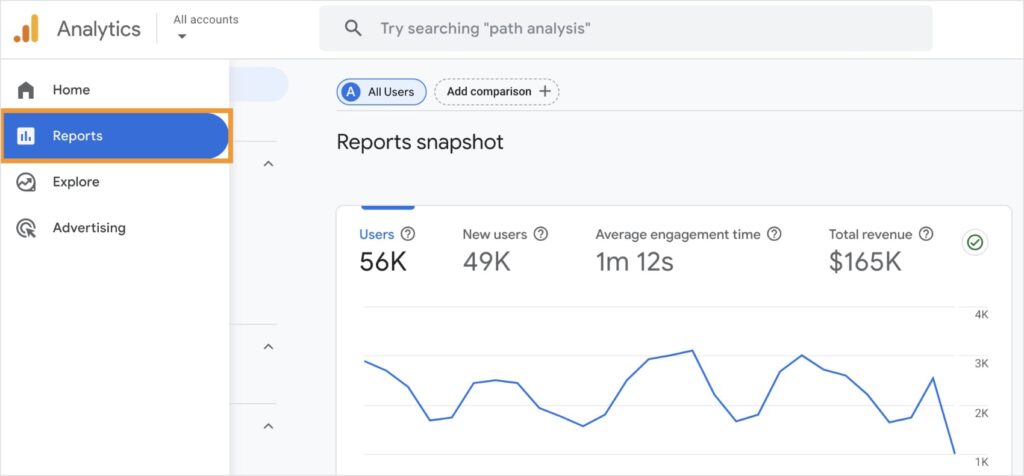
2. Under Acquisition, click Traffic Acquisition.
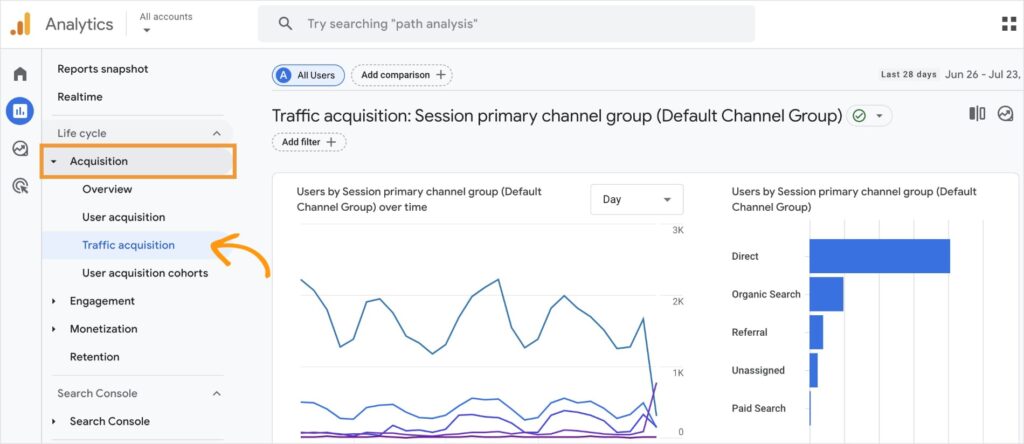
3. Scroll down to see your traffic channels and locate the Engagement Rate column. (Depending on how your report is organized, you may need to scroll to the right to find this metric.)
Now, let’s use the Organic Search channel for our example.
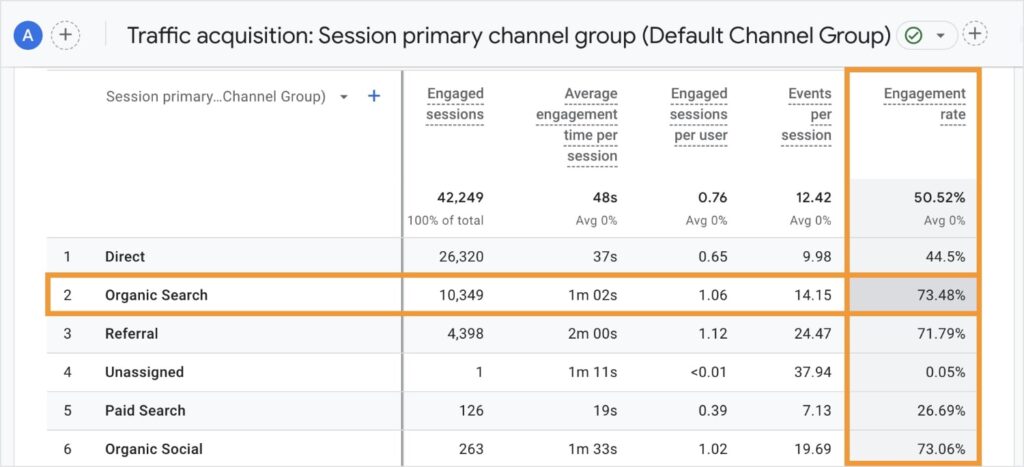
Here, we see that Organic Search has a high engagement rate of 73.48%.
And since bounce rate is the inverse of engagement rate in GA4, we can infer that the bounce rate is 26.52%.
100 – 73.48 = 26.52
(Note: This is a highly improbable bounce rate for organic search, so don’t worry if your calculation is far from this number.)
Now that you know how to calculate the bounce rate, let’s see how to add it to your GA4 reports.
2. How to Add Bounce Rate to GA4 Reports
1. Select Reports from the left-side menu.
2. Navigate to the report you want to customize.
3. Select Customize Report in the upper-right corner of your report, and click Metrics. (You’ll need to have Editor or Administrator access to perform this action.)

4. Type “Bounce rate.”
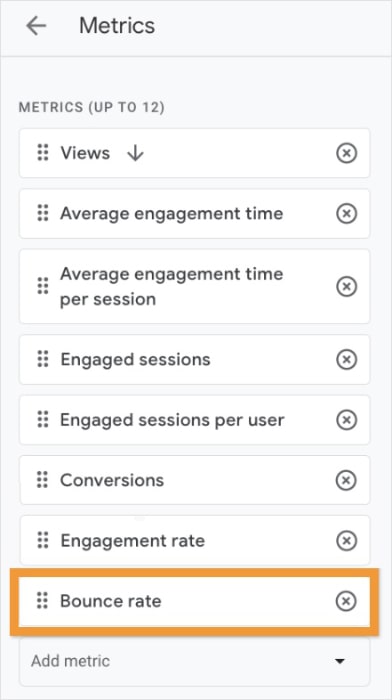
5. Click Apply.
6. Save changes.
How to Reduce Bounce Rate (With Tools!)
To reduce bounce rate, it’s essential to create content that resonates with your audience and aligns with search intent.
Easier said than done, right?
This is where LowFruits can be a game-changer.
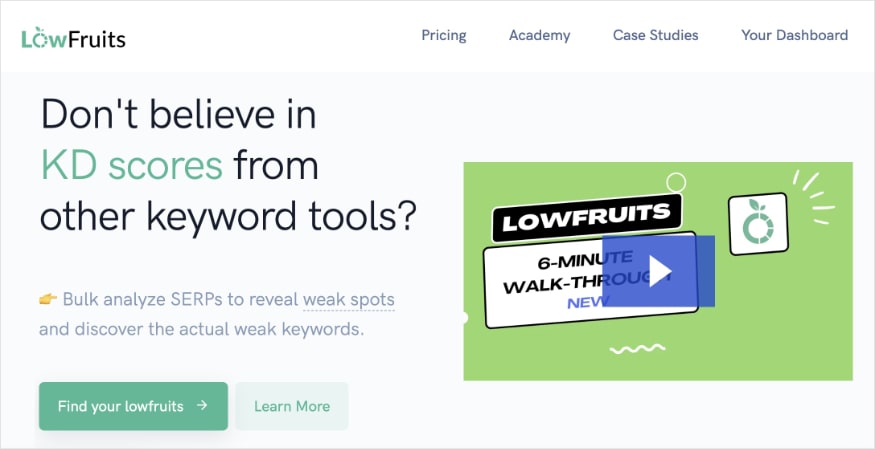
LowFruits helps you identify low-competition keywords that truly matter to your audience.
Using the KWFinder, you can find easy ranking opportunities with competitors that have low domain authority. This tool translates this data into a unique metric, weak spots, which allows you to identify low-hanging SEO wins.
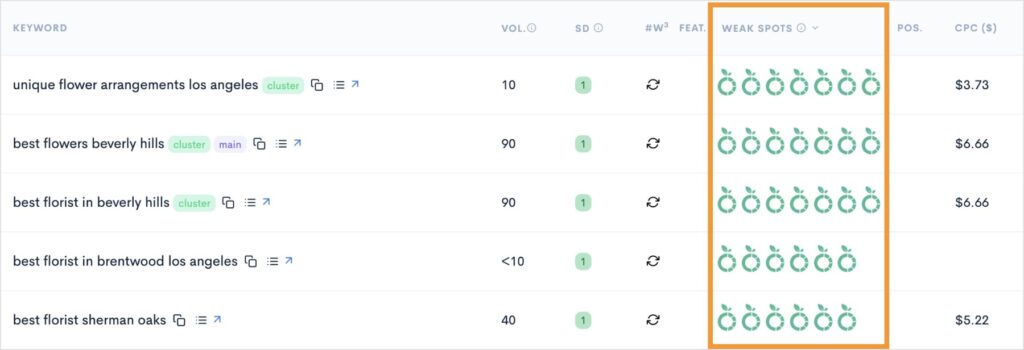
By targeting these keywords in your content, you can outrank the competition and attract high-quality traffic to your site.
These visitors will be more engaged with your content, leading to lower bounce rates and increased opportunities for conversions.
As for how to optimize your content, I recommend using SEOBoost.
This is a relatively new content optimization tool that has everything from topic research to content management. It pairs nicely with LowFruits because it allows you to write directly in the platform and get instant feedback on your keyword optimizations.
In the screenshot below, you can see that SEOBoost recommends additional keyword phrases to strengthen this article’s SEO. It’s beginner-friendly and intuitive, making it an excellent choice for DIY SEOs.
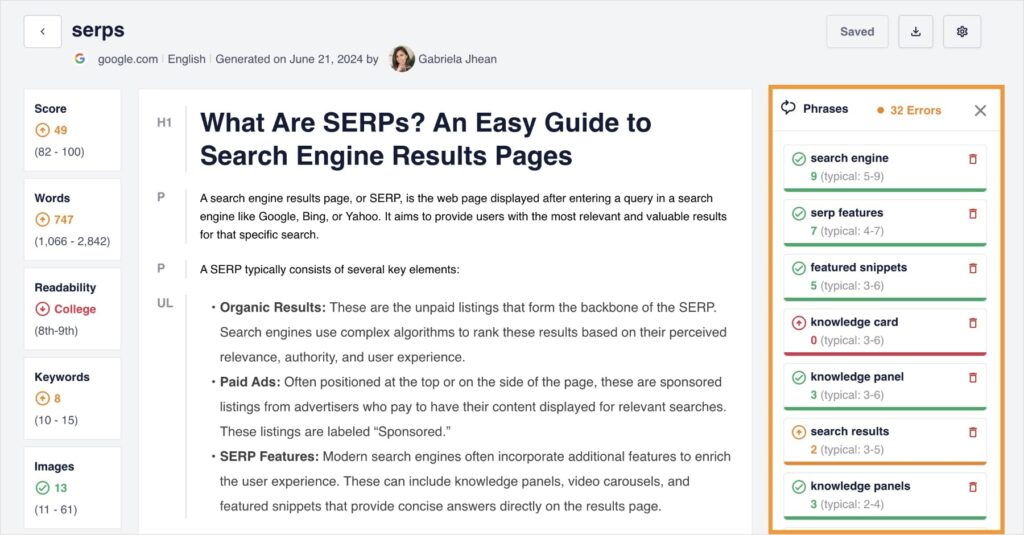
If you’re a WordPress user, I can also recommend All in One SEO (AIOSEO).
It has a similar feature to LowFruits with its TruSEO Analysis tool, which gives you action-oriented checklists for improving your on-page SEO.
Here’s an example of the Focus Keyphrase Checklist, which analyzes your content for your primary keyword:
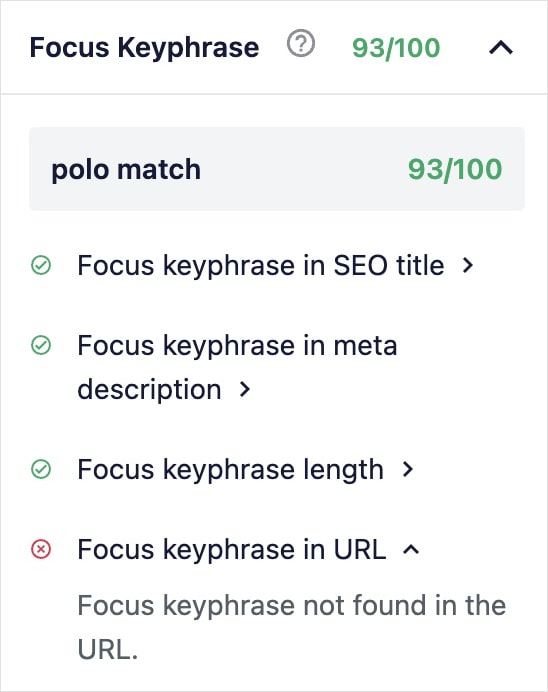
Finally, it’s important to monitor your keyword rankings to ensure your SEO efforts don’t go to waste.
LowFruits can help you track SEO performance with its Rank Tracker.
All you have to do is tell it which keywords you want it to track and how often you want it to fetch rankings. The tool will then automatically pull this data and present it to you in a user-friendly dashboard, making it easy to spot ranking wins and losses.
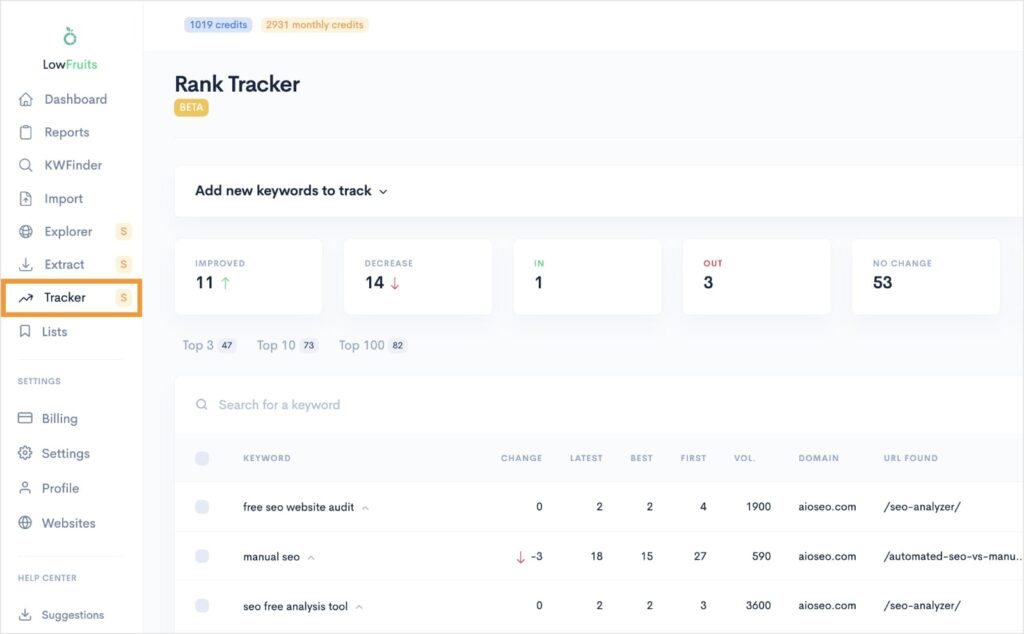
Additional Strategies for Reducing Bounce Rate
Beyond keyword optimization, consider these strategies:
- Create high-quality, relevant content: Address your audience’s needs and interests.
- Optimize page load speed: Improve website performance for a better user experience.
- Enhance website navigation: Make it easy for visitors to find what they’re looking for.
- Implement strong calls to action: Guide visitors to take desired actions.
- Optimize for mobile devices: Ensure a seamless experience across all devices.
Final Thoughts
While bounce rate isn’t a Google ranking factor, it’s still a valuable metric for understanding user behavior.
By focusing on creating engaging content and optimizing your website for a better user experience, you can indirectly improve your SEO and overall website performance.
In turn, these optimizations could also improve your bounce rate.
Further reading: